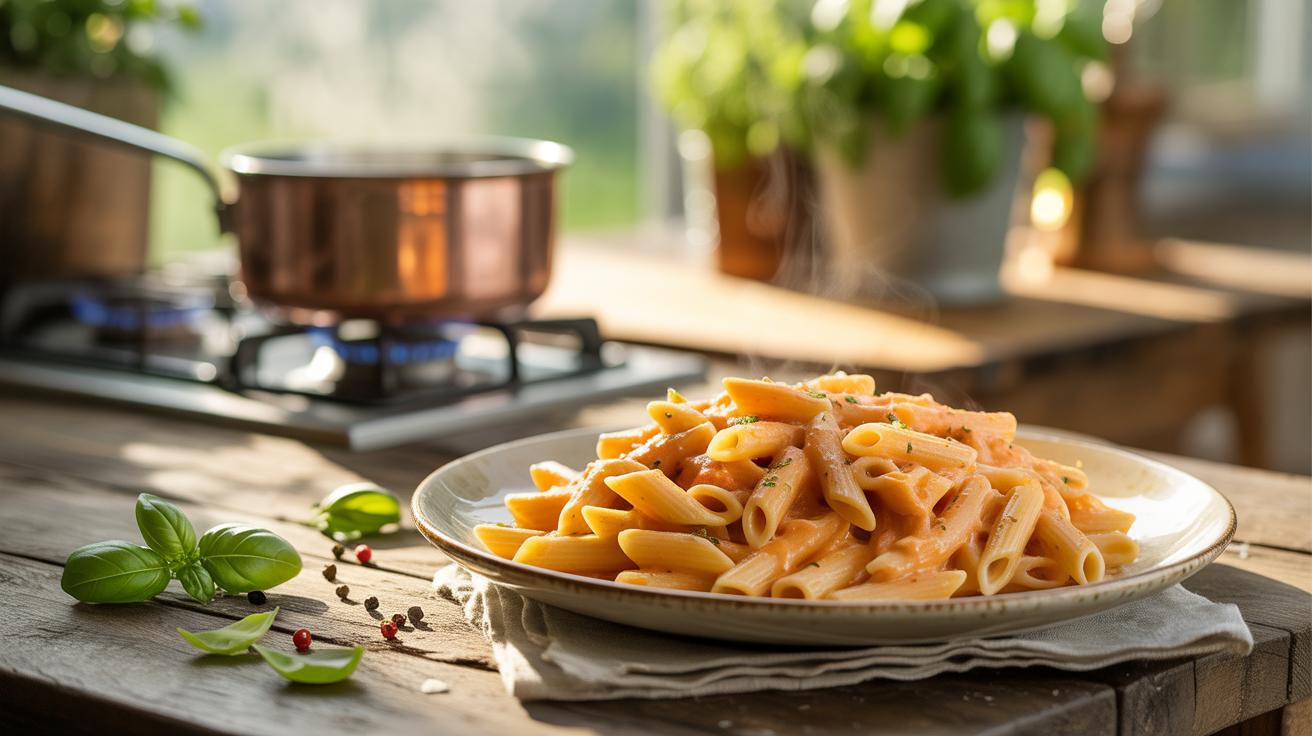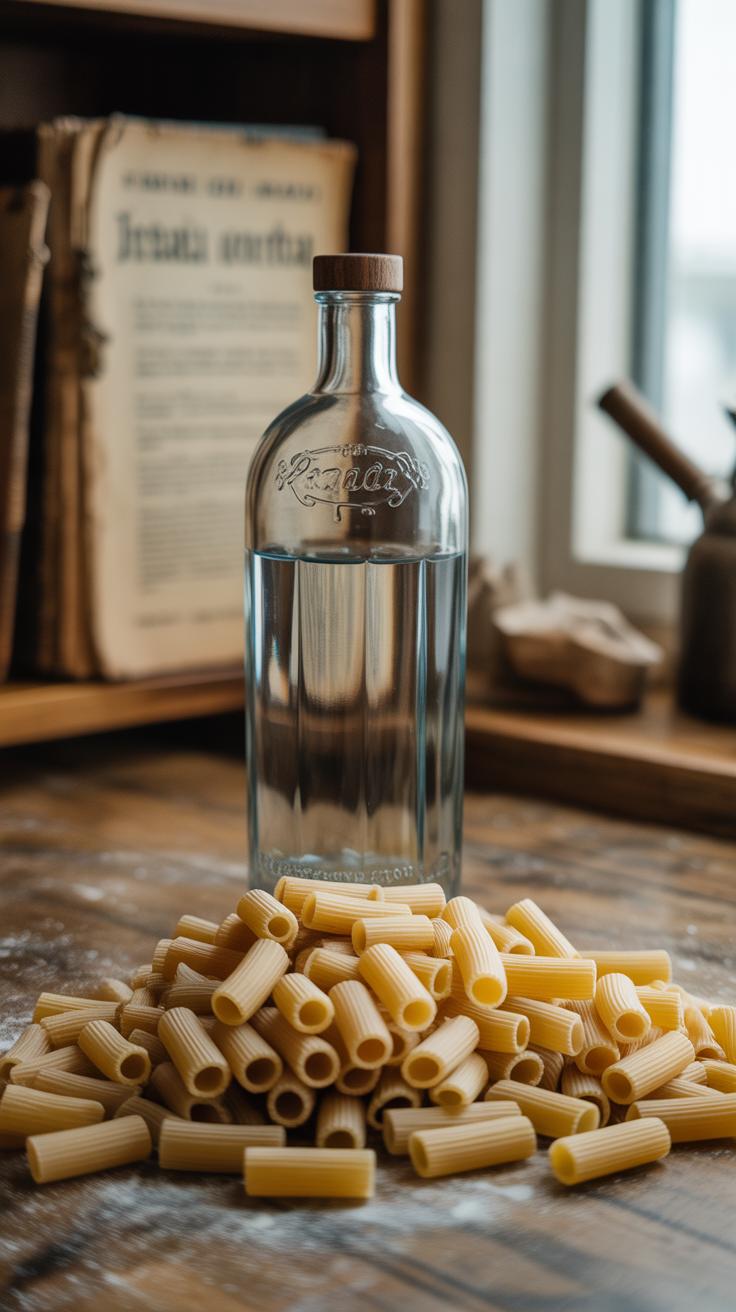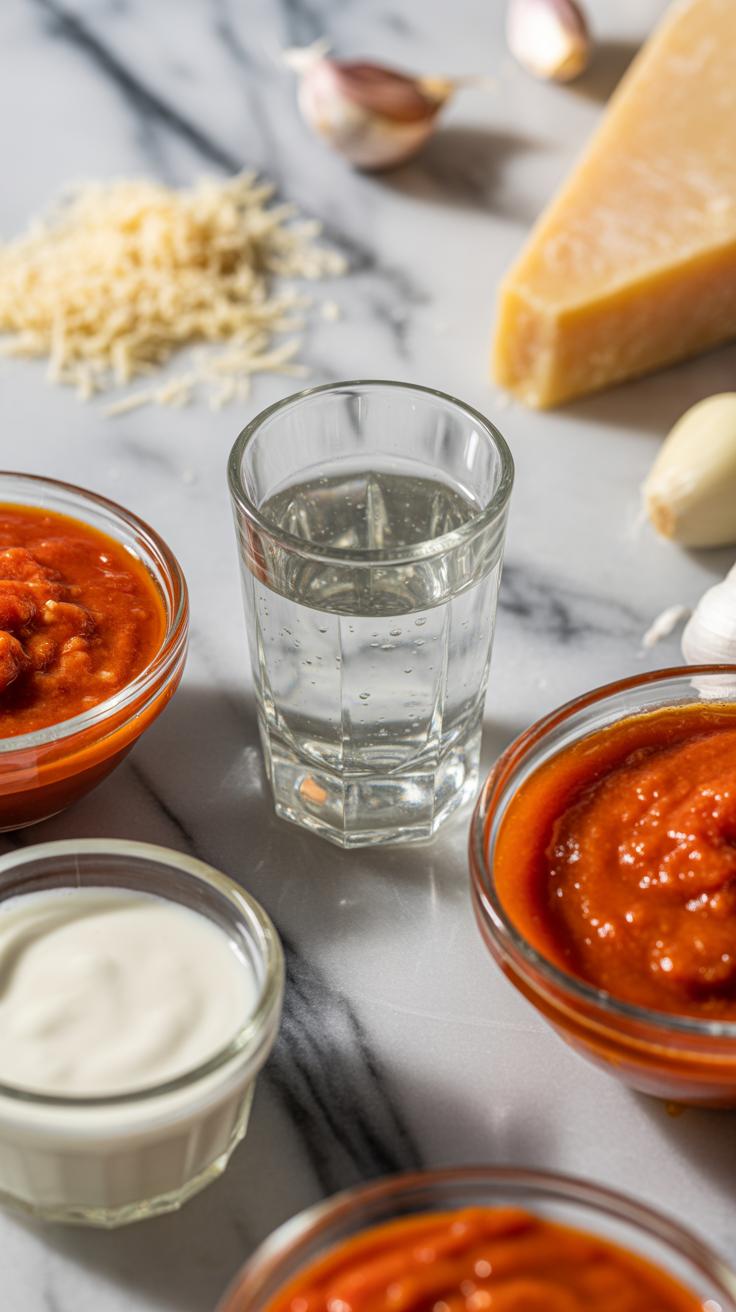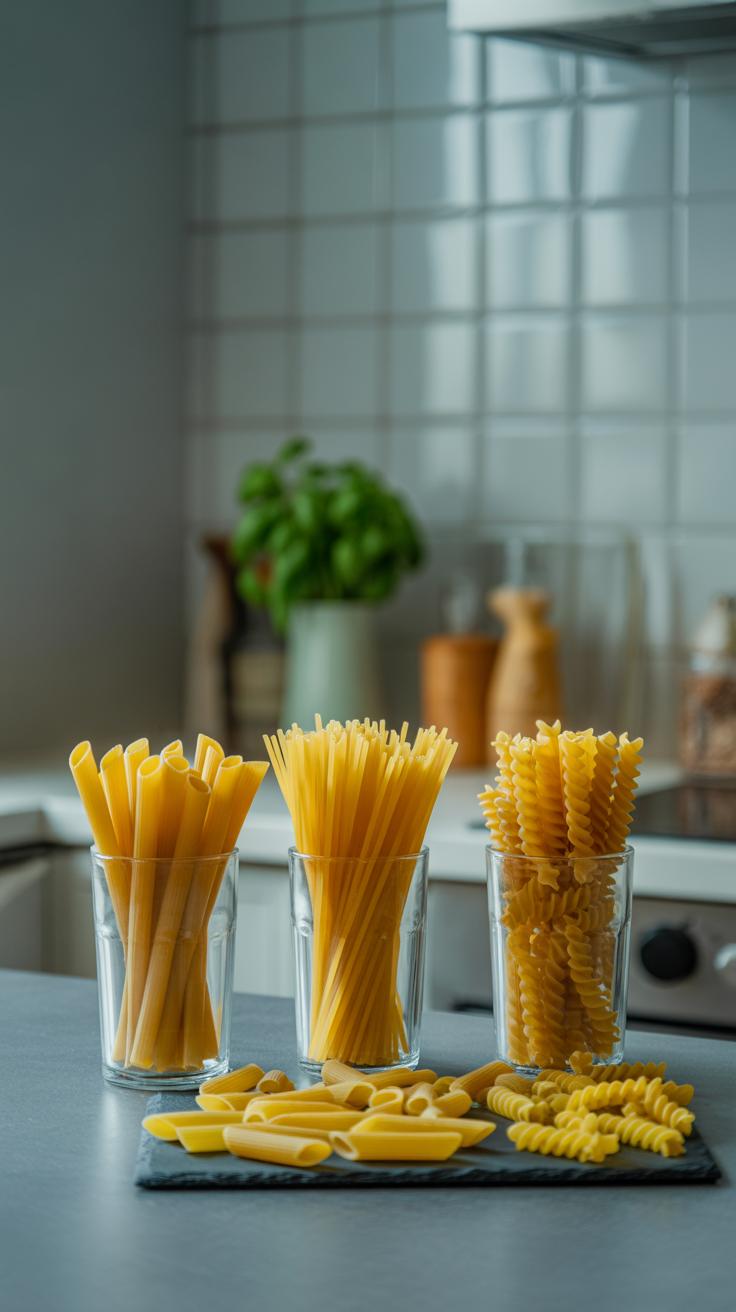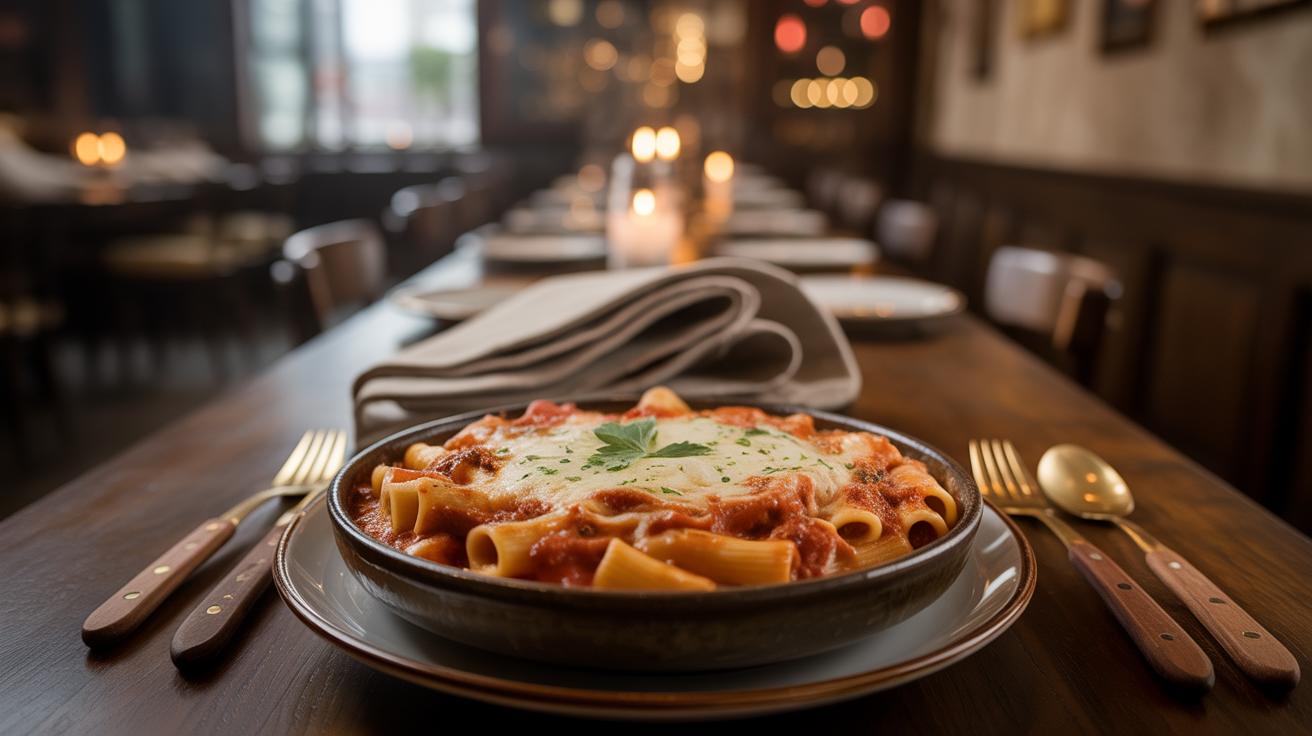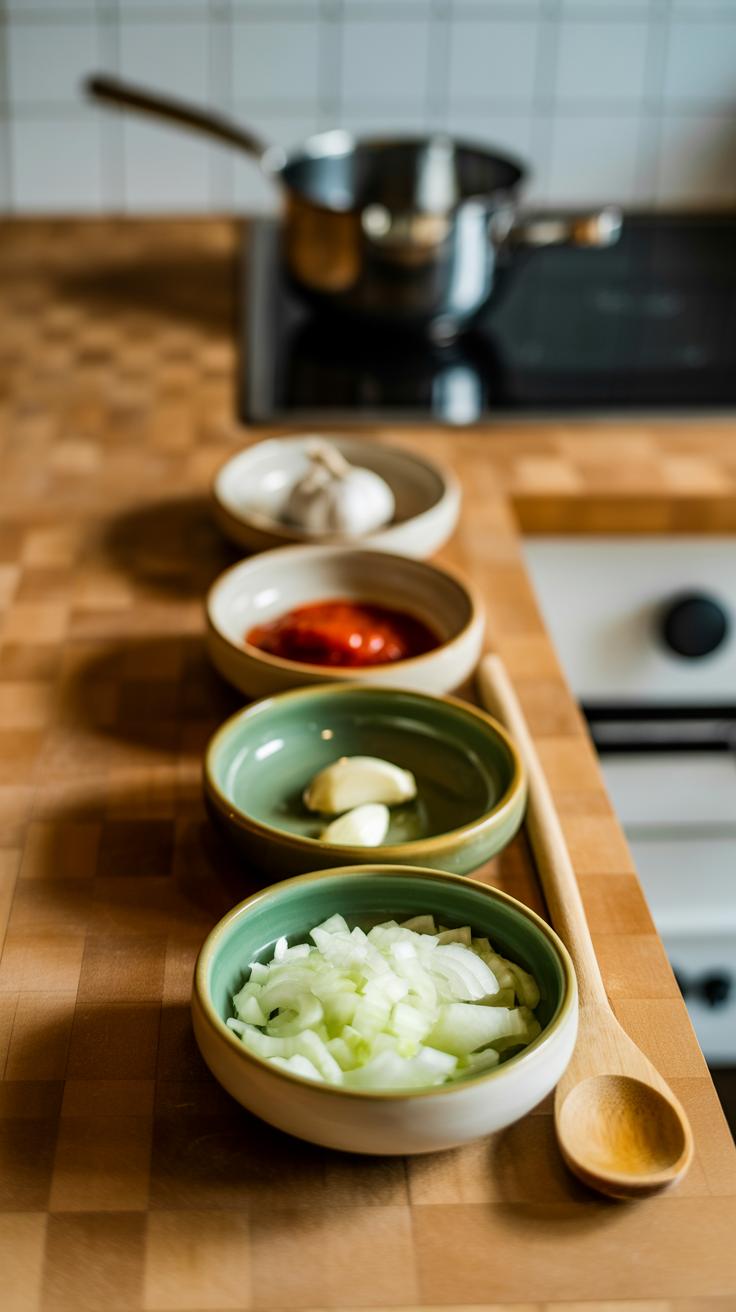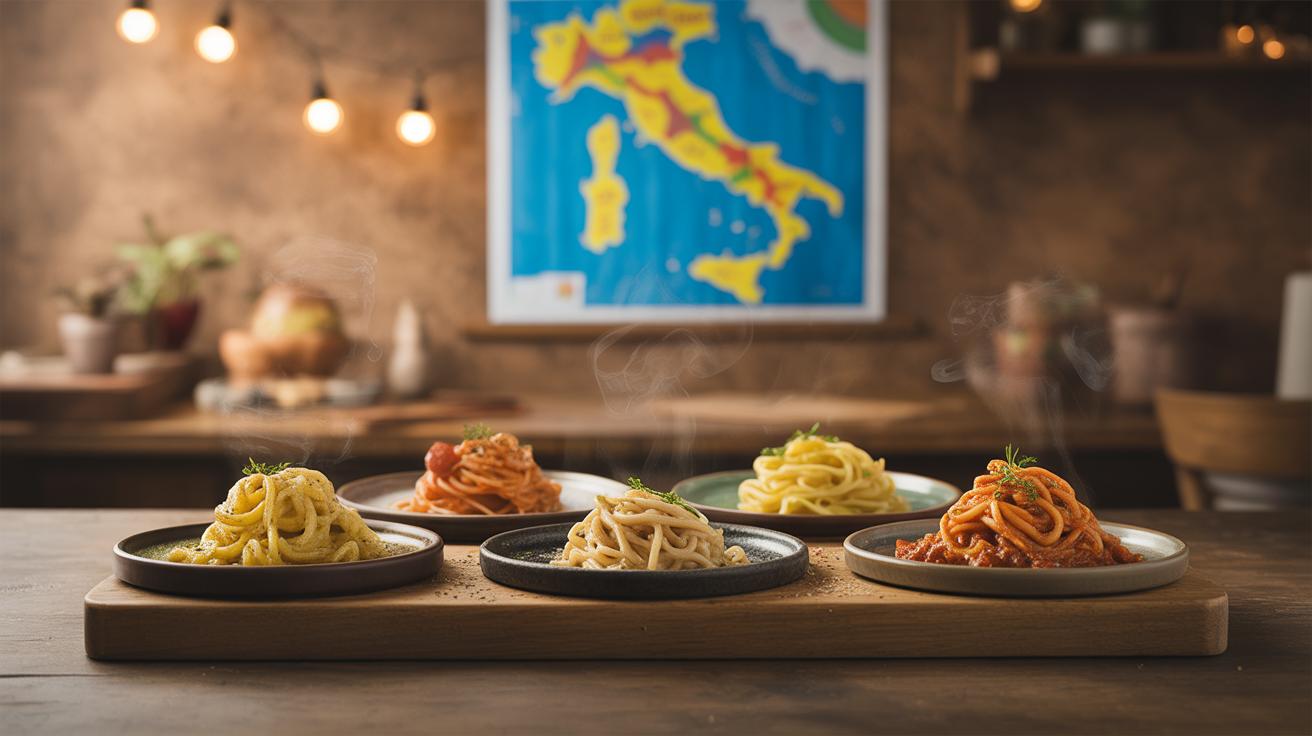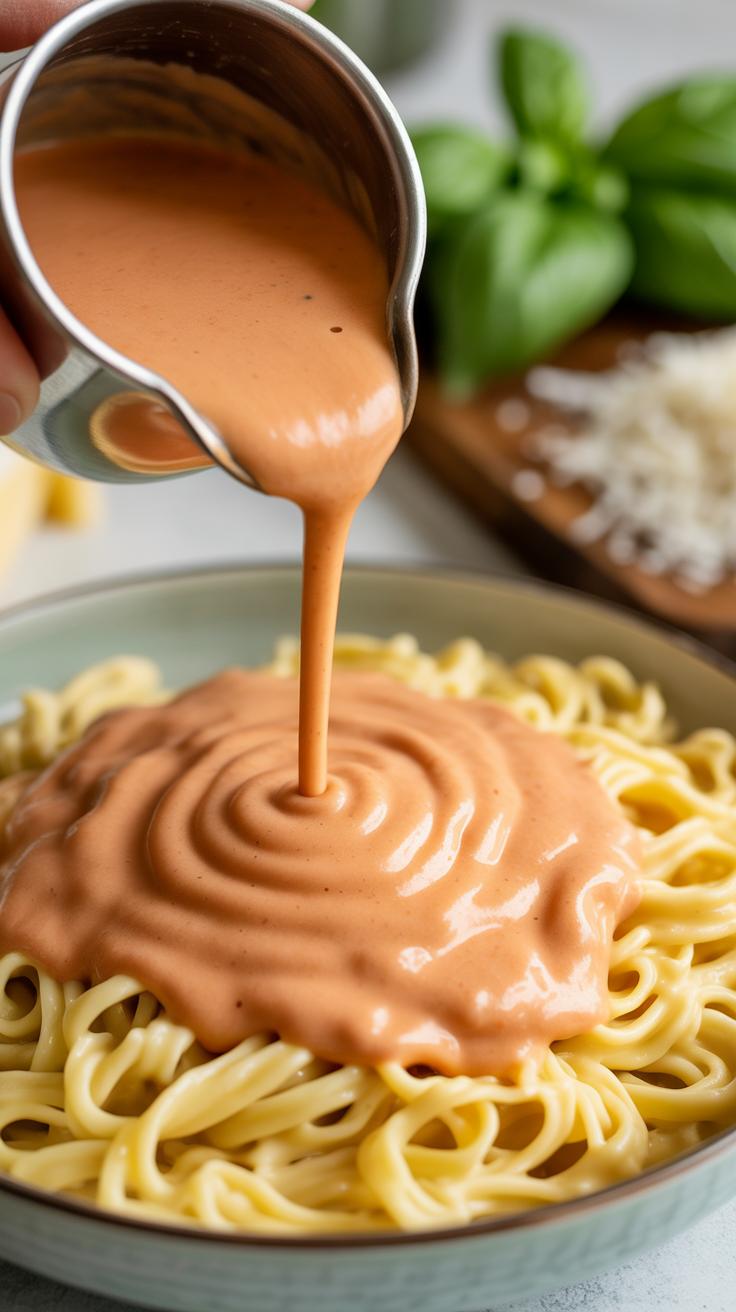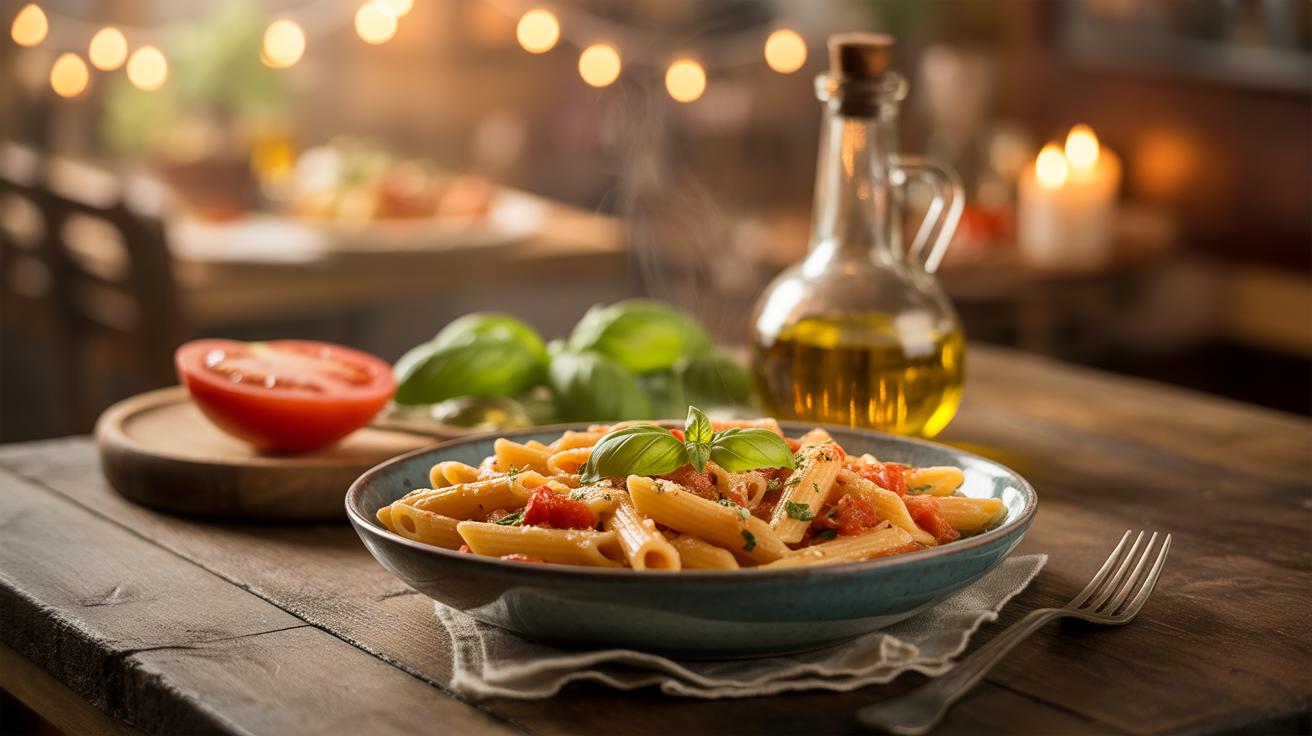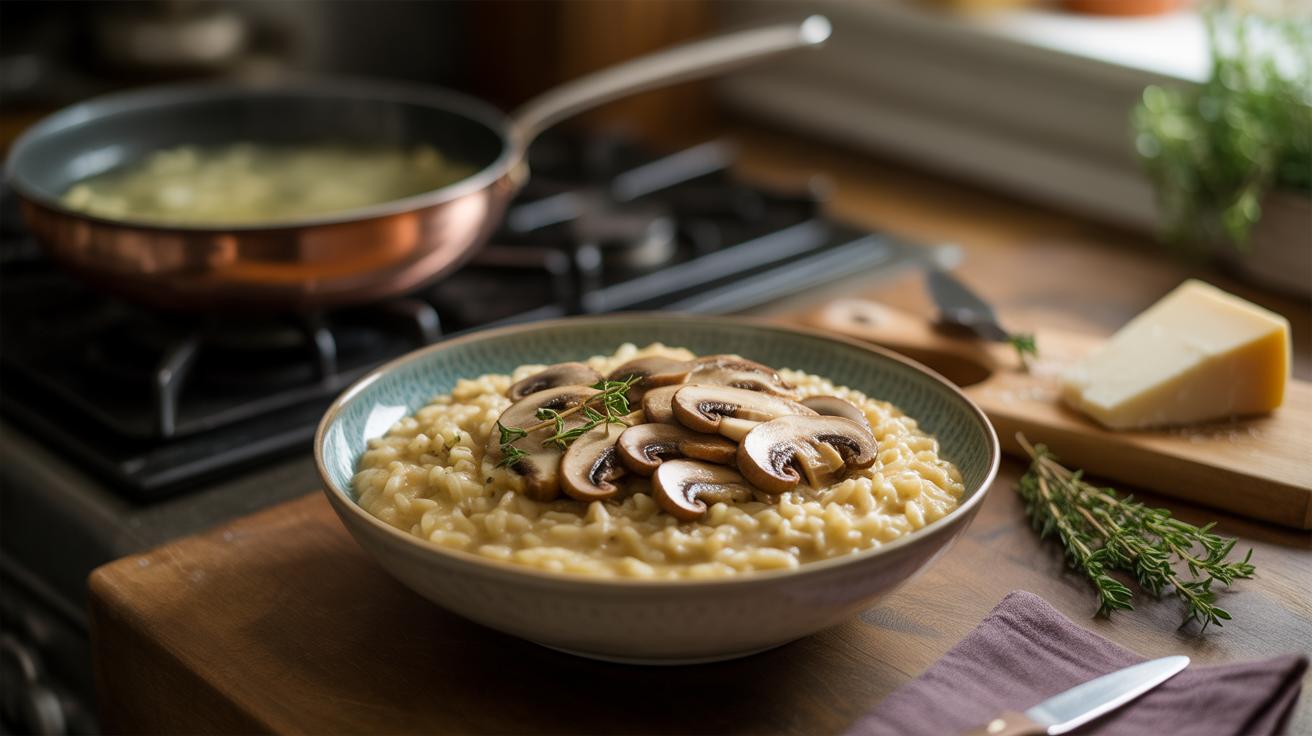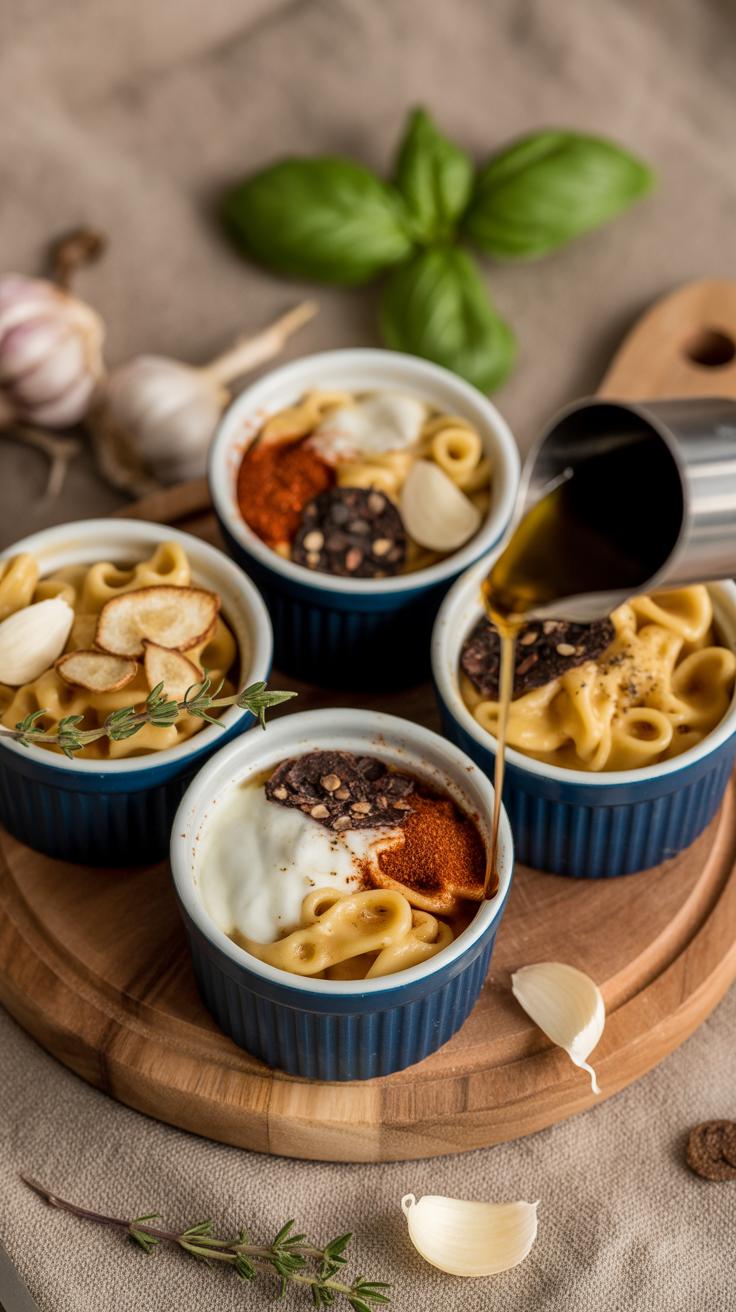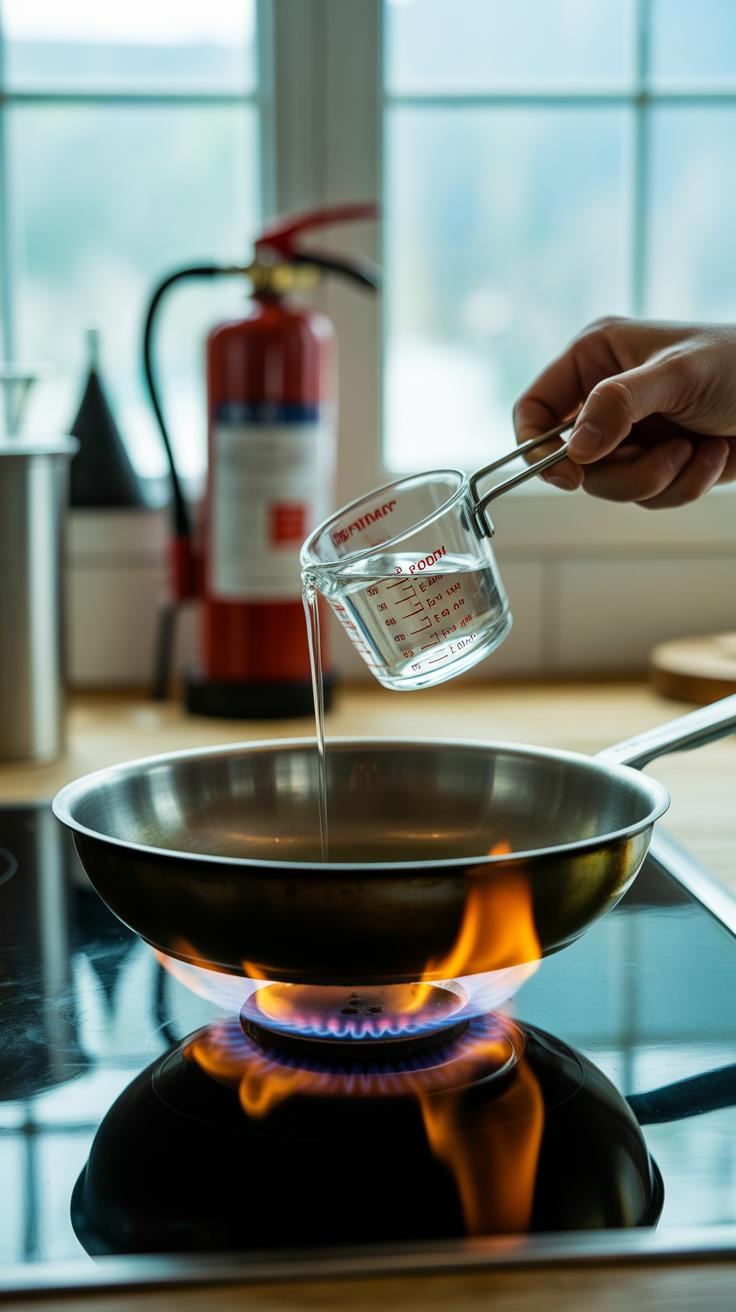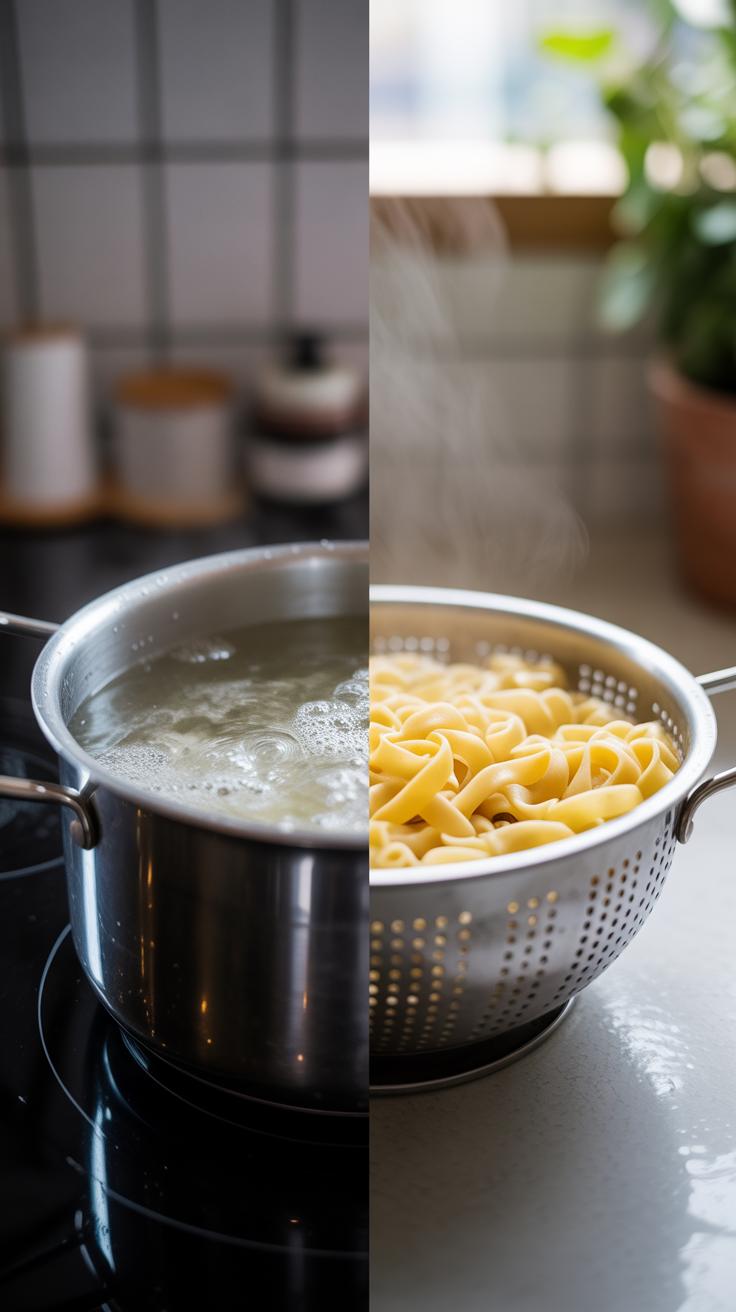Introduction
Vodka pasta dishes offer a unique blend of flavors that combines the rich tomato sauce with creamy textures and a splash of vodka. This combination creates a perfect balance, making these dishes popular in Italian-American cuisine and beyond. The vodka helps meld the flavors together, enhancing the sauce in a way that is both simple and delightful.
In this article, you will learn about classic vodka pasta dishes, their history, ingredients, and how the vodka contributes to the sauce. We will also explore practical cooking tips, variations, and ideas so you can bring this creamy twist to your own kitchen and enjoy a delicious meal.
The Origin of Vodka Pasta
The beginnings of vodka pasta are a bit fuzzy. No one can say for sure exactly where it started or who first had the idea. Some claim it’s Italian, but others argue it has roots elsewhere. What we do know is that it gained traction both in Italy and across the ocean in the United States during the late 20th century. In Italy, it was seen as a clever way to blend a sharp spirit with creamy tomato sauce, creating something that felt modern and a bit daring.
In the United States, vodka pasta became something of a novelty, introduced by Italian-American cooks who were adapting traditional recipes to new ingredients and tastes. This blend of cultures helped make the dish popular, though many purists still debate if vodka really “belongs” in pasta. Yet, there it is—part of the culinary experience in both countries, balancing between classic and contemporary.
Tracing the First Recipes
The earliest known vodka pasta recipe shows up in the work of Italian chef Ugo Tognazzi. He played around with vodka in pasta sauces sometime in the mid-20th century, creating a dish that combined tomato, cream, and just a splash of vodka. But the real rise to fame came with penne alla vodka, which burst onto the scene a bit later.
This dish uses penne pasta tossed in a sauce that’s creamy but also carries a slight bite from the vodka. The alcohol helps release flavors in the tomatoes that wouldn’t otherwise show up. Not many recipes from that era mention vodka, so it feels like a lucky culinary accident that caught on and stuck around. Maybe it was the perfect timing or the intrigue around alcohol in cooking that helped.
The Rise of Vodka Pasta in Popular Culture
The 1980s disco scene played a big part in making vodka pasta popular, especially in the United States. The dish fit the vibe—something flashy yet approachable, bold but not intimidating. It showed up in trendy restaurants and on party menus, becoming part of the culinary soundtrack of that decade.
These days, vodka pasta still holds a place on many menus, often enjoyed as comfort food but also as a conversation starter. It’s somewhat nostalgic but hasn’t lost its appeal. The dish’s cultural significance reflects how food adapts, blends, and sometimes, just hangs on for reasons hard to explain but easy to appreciate. Have you tried it at a party or homemade? It’s interesting how something seemingly simple can carry such mixed feelings and history.
Understanding Vodka Sauce Composition
Vodka sauce is a curious blend that somehow manages to feel both simple and rich at once. Its core ingredients work together in ways that might surprise you, coming from very basic kitchen staples to create something greater than the sum of its parts. The main components usually include tomatoes, cream, vodka, herbs, and cheese. Each plays a distinct role, but often their effects overlap, making the sauce a delicate balance rather than a straightforward recipe.
Tomatoes provide the base, lending acidity and a bit of sweetness. The cream softens that tang, giving the sauce its signature smooth texture. Vodka, surprisingly, isn’t about making the dish boozy; rather, the ethanol in vodka helps release flavors from the tomatoes and melds the cream and tomato’s acidity. It acts almost like a bridge between these components, allowing them to combine into a velvety sauce instead of a curdled mess. I’ve always found it interesting that vodka, despite evaporating during cooking, still leaves behind this subtle yet definite effect.
Herbs, usually basil or sometimes oregano, bring a gentle earthiness that lightens the richness. Meanwhile, cheese—often Parmesan—is grated in toward the end, adding a salty, savory note. This completes the flavor circle without overpowering the creaminess. If you leave it out, the sauce almost feels incomplete, like it’s missing a final touch of depth. In my experience, skipping herbs or cheese can make the sauce feel a bit too heavy or one-dimensional, so don’t overlook their importance.
What’s fascinating is how the vodka’s ethanol molecules help emulsify the fat in cream with the watery tomato base. Without it, you might end up with a patchy sauce. The presence of alcohol enables these ingredients to bind better, improving texture and flavor balance. So, while you might think vodka is just a quirky addition, it’s really key to why the sauce tastes and feels the way it does.
Choosing the Right Pasta for Vodka Sauce
Picking the pasta shape that best pairs with vodka sauce can really change your whole dish experience. You might wonder why penne often steals the spotlight. It isn’t just tradition or habit. Penne’s tubular shape actually grabs the creamy vodka sauce inside, so every bite feels richly coated, not just draped over the surface.
Inside the little tubes, the sauce pools perfectly, which means more flavor in every forkful. This is especially handy with vodka sauce since it’s smooth but slightly thick—too flat a pasta, and the sauce slides right off.
Why Penne Works Well
Penne’s short, ridged tubes catch the sauce like tiny reservoirs. When you twirl or scoop them, the sauce clings inside and around, making sure the creamy tomato and vodka don’t just sit on top but become part of the pasta itself. It’s like each piece carries its own mini serving of sauce.
Also, the ridges add texture, keeping the sauce anchored without overwhelming the bite. I’ve tried smoother pastas with vodka sauce, and honestly, it’s a bit disappointing because the flavors don’t stay concentrated the way I like them. Penne feels just right—robust yet easy to eat.
Exploring Pasta Alternatives
If you want to mix it up, there are a few other shapes worth considering:
- Rigatoni: Larger tubes with ridges, similar to penne but with a bolder presence. It holds sauce well but can sometimes dominate the bite.
- Fusilli: The spiral shape traps bits of sauce in its crevices, adding both flavor and texture.
- Orecchiette: These “little ears” form natural cups that scoop up sauce, making them a bit less common but quite effective.
- Farfalle: The bow-tie shape offers a fun alternative, though the flat sections may lead to slightly less sauce retention.
Choosing pasta for vodka sauce can be a bit of personal preference, too. Do you want the sauce to coat every strand, or would you rather it nestle inside? Trying different shapes might surprise you. Penne usually does the trick, but don’t hesitate to experiment a little when you’re in the mood for something new.
StepbyStep Guide to Making Vodka Pasta Sauce
Preparing Ingredients
Start by gathering fresh tomatoes—either canned crushed or whole peeled works well. If you’re using whole, crush them yourself for better texture. Garlic should be finely minced; too big pieces can overpower or burn quickly. Vodka doesn’t need chilling, but pouring at room temperature helps it blend smoothly when added to the hot pan. Cream, which you’ll add later, should be ready to go in a small bowl so you can pour without hesitation. Oh, and don’t forget a good quality olive oil—this is where much of the flavor begins.
Chopping and measuring everything beforehand makes the cooking process less rushed. I find that prepping garlic and tomatoes early helps avoid those moments where you’ve forgotten something key and end up scrambling—maybe you’ve been there too.
Cooking the Sauce
Heat olive oil over medium heat, then toss in the garlic. Stir it gently until fragrant but not browned—about a minute, sometimes less. Burnt garlic tastes bitter, so watch carefully. Next, pour in your tomatoes and let them simmer, breaking up large chunks with a spoon. This step builds the sauce’s body.
Once the tomatoes have thickened a bit, pour in the vodka. Let it bubble a few minutes to cook off the harsh alcohol flavor while keeping the subtle sharpness it adds. Stir occasionally. The sauce should start to reduce and darken slightly.
At this point, the sauce looks almost done, but it needs cream to become that signature silky sauce. Before adding cream, adjust salt and pepper; the balance here is crucial, yet personal. Sometimes I add just a pinch of red pepper flakes for quiet heat, but only if I’m feeling adventurous.
The hardest part is watching for the right consistency. If it’s too watery, simmer longer. Too thick? A splash of pasta water can save it. Pasta water is magic, seriously. Keep some handy when cooking your noodles.
Turning Vodka Pasta Into a Creamy Delight
Adding cream to vodka pasta really shifts things. Suddenly, the sauce isn’t just tangy and sharp; it becomes smooth and velvety. That creamy texture coats the pasta in a way that tomato and vodka alone can’t quite achieve. You might find the sauce feels richer without being heavy, striking a curious balance between comfort and elegance.
The cream softens the acidity of the tomatoes, taming that bright, sometimes punchy edge of the vodka sauce. It’s not just about softness, though — the cream adds body, making each bite linger. Sometimes, you might wonder if the cream overwhelms the dish, but when done right, it’s a gentle partner rather than a dominant flavor.
The Role of Cream in the Sauce
Cream does more than change flavor and mouthfeel — it alters the sauce’s appearance. When added, it lightens the deep red of the tomato base to a lovely salmon or blush pink. This shift isn’t just pretty; it signals the sauce’s smoothness. You get a slightly thickened texture that’s inviting without being gluey or heavy.
Mixing cream with vodka and tomato forms an emulsion, blending oil and water components smoothly. That’s why the sauce feels cohesive instead of separating or looking patchy. It’s kind of fascinating how these simple ingredients interact visually and texturally to make the dish more appealing.
Tips for Creamy Sauce Perfection
Picking the right cream helps a lot. Fresh cream with about 30–35% fat works well. Too light, and your sauce might turn thin or risk curdling; too heavy, and it can feel rich to the point of cloying. I’ve found that half-and-half can work in a pinch but isn’t quite as forgiving.
Careful temperature control is key. Add cream off the heat or with the sauce gently warmed rather than boiling. Stir gently so the cream blends steadily — sudden heat or vigorous boiling might cause it to split. If you want to be extra cautious, temper the cream by mixing a bit of hot sauce into it before adding it all together.
Do you ever wonder why some creamy sauces separate while others stay glossy? It’s usually about patience and timing more than fancy ingredients. Take your time, and don’t rush the cream into a furious boil. Your sauce will thank you.
Flavor Variations and Enhancements
When it comes to vodka pasta, the sauce itself offers a creamy and tangy base that’s quite forgiving, which means you can experiment easily with herbs and spices. Basil is probably the most popular choice—fresh or dried, it adds a subtle sweetness that balances the acidity of the tomato and the sharpness of the vodka. Oregano brings a bit more earthiness, but it can quickly overpower if you’re not careful, so I tend to use just a pinch. Black pepper, freshly ground, gives a nice gentle kick. Sometimes, I wonder if a hint of red pepper flakes could add a lively edge, but I don’t always want to push it, especially if the creaminess is the central focus.
For proteins, sausage can change the dish significantly. Its savory richness pairs well with the creamy vodka sauce, making the meal feel heartier. Pancetta or bacon, crisped up and stirred in at the end, offers a smoky, salty contrast that works surprisingly well. If you’re after a lighter touch, peas add a pop of sweetness and a bit of texture, scattered throughout the sauce just before serving. You might think these veggies don’t quite belong in such a rich dish, but their freshness can actually cut through the heaviness a little, which I find refreshing on occasion.
Don’t hesitate to combine these elements. Imagine basil and pancetta with a sprinkle of black pepper—it’s a simple mix, yet complex on the palate. Or peas and sausage, if you want a play on textures and flavors without too much intensity. The trick is not to clutter the dish but to find that balance where each addition feels purposeful. Have you tried adding something unexpected, like mushrooms or even a touch of garlic? Those can also shift the flavor profile in interesting ways, though they deserve their own spotlight to avoid overwhelming the delicate vodka undertone.
Tips for Cooking with Vodka Safely and Effectively
Alcohol Evaporation During Cooking
When you add vodka to your pasta sauce, the goal is usually to keep that sharp, slightly sweet flavor while losing most of the alcohol. How long you cook really matters here. If you stir it in and immediately reduce the heat or just simmer for a few minutes, a good portion of the alcohol stays in the sauce. On the other hand, simmering for 20 to 30 minutes allows most of the alcohol to burn off.
Some people worry that long cooking kills the vodka taste, but that’s not always the case. It’s a bit of a balancing act. For example, I often let the vodka reduce with the tomatoes before adding cream. That way, you get the boozy nuance without the harsh burn.
Selecting Vodka for Cooking
Many might assume you need expensive vodka to cook with, but honestly, that’s not true. Since you’re not drinking it straight, there’s no need for top-shelf brands. A mid-range, clean-tasting vodka works just fine and keeps costs reasonable.
It’s best to avoid flavored or heavily scented vodkas, though—they can overpower your sauce or clash with other ingredients. Plain, neutral vodka maintains that subtle brightness that cuts through the richness, adding a little kick without being distracting.
In the end, just pick something you’d be okay cooking with regularly, and you’ll find the perfect balance between flavor and budget.
Serving and Pairing Vodka Pasta Dishes
Serving vodka pasta isn’t just about plating; it’s about balancing flavors and textures carefully. When you dish it out, don’t rush to mix everything up at the table. Let the creamy sauce stretch elegantly over the pasta, inviting the first bite. A modest sprinkle of grated Parmesan on top adds a lovely saltiness and nuttiness that brightens each forkful. Fresh herbs can bring a burst of color and freshness too—think torn basil or finely chopped parsley. They lift the dish without overpowering that smooth, rich sauce.
You might want to consider a light touch rather than piling on garnishes. Sometimes less is more, especially when the vodka cream sauce is the star.
As for drinks, vodka pasta pairs well with beverages that can cleanse the palate without stealing the scene. A dry, light white wine—like Pinot Grigio or Sauvignon Blanc—offers acidity that cuts through the creaminess. Sparkling water with a twist of lemon or lime also works fine, especially if you prefer something non-alcoholic. These choices refresh the mouth between bites and highlight the subtle flavors without clashing.
Have you ever noticed how a simple pairing can change the whole experience of a meal? Maybe you’ll discover your own favorite combo, but starting with these options usually hits the mark. The key, I guess, is to keep the accompaniments gentle so the pasta remains the focus.
Common Mistakes to Avoid in Vodka Pasta Preparation
Getting vodka pasta just right can be tricky. One common error is struggling with the sauce’s texture. Sometimes, it ends up too watery, leaving the pasta barely coated, or overly thick, almost gluey. If your sauce feels thin, letting it simmer a little longer usually helps reduce excess liquid. On the flip side, adding a splash of reserved pasta water can loosen overly thick sauce without watering down the flavor. That extra bit of starch in the water often does magic.
Balancing flavors also trips many cooks up. Trying to get the right hit of tomato, cream, and vodka—each taking its turn to shine—can feel like walking a tightrope. Too much vodka and the sauce tastes sharp and unbalanced; too little, and its signature bite disappears. A small taste test before tossing in the cream helps guide how much alcohol to keep. And adding cream slowly while stirring allows you to watch the sauce’s transformation. You may find yourself adjusting amounts mid-way, which is okay—recipes aren’t strict rules.
At times, I’ve noticed people rushing the vodka’s burn-off stage. It’s tempting to throw vodka in and move on, but a gentle simmer for a few minutes is crucial. It tames the alcohol’s edge and lets the flavor blend naturally. Skipping this step results in a harsh sauce that overwhelms the dish rather than elevating it.
So, watching the sauce carefully, tasting often, and being patient usually prevent most pitfalls. It’s not just about following steps but about feeling when the sauce looks and tastes right. Does your sauce stick to the pasta? Can you taste a gentle warmth from the vodka without it dominating? Those are good signs you’re on the right track.
Expanding Your Vodka Pasta Recipe Collection
If you enjoy vodka pasta, it’s tempting to stick with the classic recipe—but there’s so much potential beyond that familiar creamy sauce. Trying new versions can be surprisingly rewarding, even if the first few attempts feel a bit off. You might surprise yourself with flavors you hadn’t considered before.
For example, adding ingredients from other regions can shift the dish in interesting ways. Imagine using smoked paprika and chorizo for a Spanish twist or swapping basil for fresh Thai basil and incorporating coconut cream for a different vibe. These subtle changes can make a dish feel fresh without losing the core vodka pasta appeal.
Thinking about diet restrictions? Vegan or dairy-free options don’t have to be bland. Silken tofu, cashew cream, or even oat cream work well in place of traditional cream. Nutritional yeast can add that cheesy depth missing when you skip Parmesan. I tried cashew cream once—it wasn’t quite the real thing, but close enough to keep craving more.
Maybe this makes you wonder: where to start experimenting? Begin with small swaps. Use a plant-based cream, try a new herb, or explore spices you don’t usually pair with pasta. Each attempt broadens your understanding of vodka pasta’s flexibility, letting you adapt it to any occasion or taste you want. Why stay fixated on one way when so many are waiting?
Conclusions
Classic vodka pasta dishes provide a wonderful opportunity to enjoy a creamy, flavorful sauce with a subtle twist. The vodka is not only an ingredient but a key element that enhances the sauce’s texture and taste. By understanding the history and composition of these dishes, you can appreciate the simple yet effective ways to prepare them at home.
Experimenting with vodka pasta lets you create versatile meals that can suit many occasions. Whether you stick to the traditional penne alla vodka or try your own variations, the combination of cream, tomatoes, and vodka will always deliver a satisfying and tasty experience for your family and friends.

